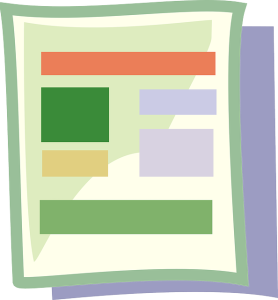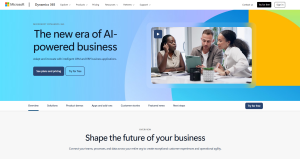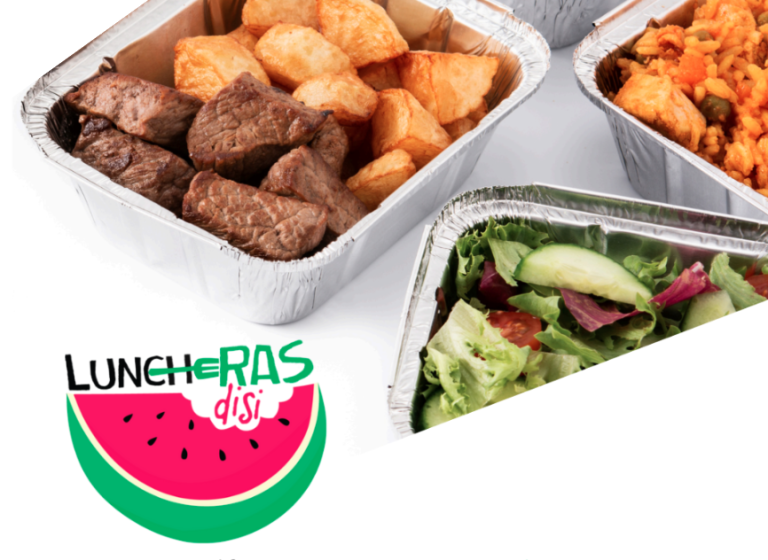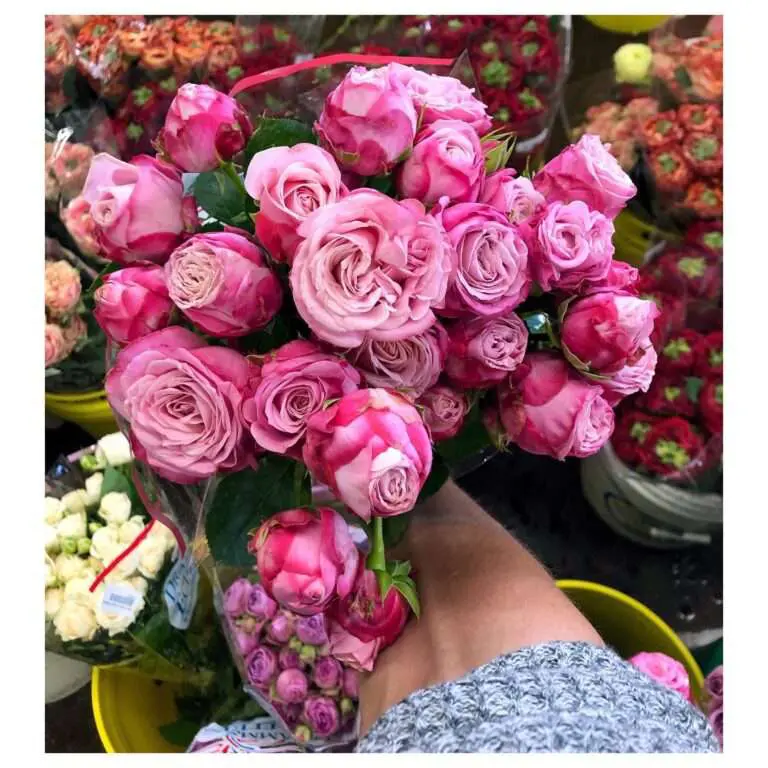Designing a business flyer that grabs attention and effectively conveys your message is essential for any marketing campaign. Whether you’re promoting a new product, hosting an event, or announcing a sale, a well-designed flyer can make a significant impact. With the right tools and strategies, you can easily create flyers that not only stand out but also engage your audience. Using business flyer templates, including free flyer templates, is a great way to save time and ensure a professional result. Let’s dive into how you can design eye-catching flyers that make your business shine.

Save 80% of delivery management time
We handle everything:
- Dedicated operations manager
- Real-time tracking dashboard
- Automated customer notifications
- Urgent issue resolution
What is Flyer Marketing and Why is it Effective?
Flyer marketing is a cost-effective strategy that uses visually striking printed or digital materials to promote a business, event, or product. Designed to capture attention quickly, flyers deliver concise messages that prompt action. Whether handed out in person, mailed, or shared online, they offer a versatile blend of affordability and effectiveness.
Flyers remain effective due to their ability to create lasting impressions. Using professionally designed templates and high-quality prints, businesses can creatively promote services, events, or new products. Unlike digital methods, flyers tangibly engage customers, fostering a stronger connection to the brand. They can be easily placed on doors, included in mail campaigns, or displayed in high-traffic areas for repeat exposure.
Personalizing flyers further enhances their impact. By incorporating logos, custom photos, and brand-aligned color schemes, businesses can ensure their message resonates with the target audience and strengthens promotional efforts. As discussed in Guerrilla Marketing by Jay Conrad Levinson, tangible marketing materials like flyers play a critical role in creating a memorable brand presence by engaging customers in unexpected and creative ways.
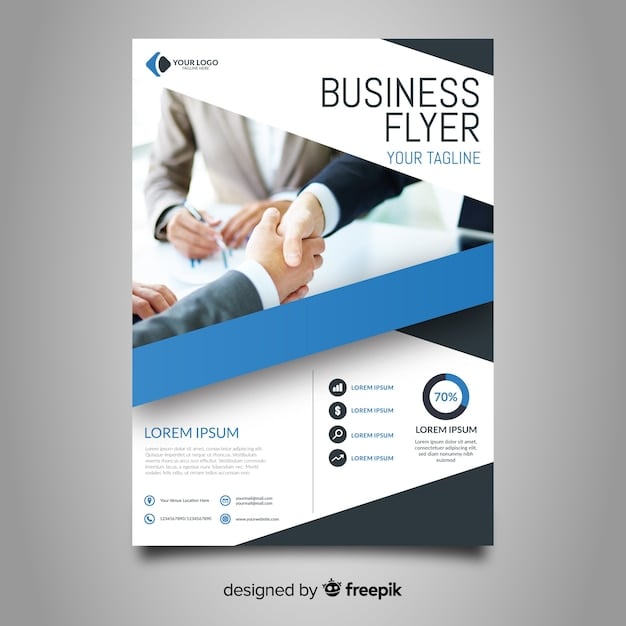
Top Ten Benefits of Using Custom Flyers to Promote Your Business
Custom flyers are a versatile and powerful marketing tool that helps businesses connect with their audience in a cost-effective and impactful way. Whether you’re running a small business, launching a new product, or hosting an upcoming event, flyers provide the perfect medium to communicate your message and showcase your brand. Here are ten detailed reasons why custom flyers are an invaluable asset to your marketing campaigns:
1. Cost-Effective Advertising
Flyers are one of the most affordable ways to advertise your business or promotion. Unlike expensive digital campaigns or large-scale advertisements, flyers can be produced at a fraction of the cost while still delivering impressive results. With access to free flyer templates and professionally designed templates available online, businesses can save money on design and focus their budget on printing and distribution. This affordability makes flyers ideal for small businesses looking to maximize their marketing efforts without breaking the bank.
2. Highly Customizable Designs
Custom flyers offer endless opportunities for personalization. You can tailor every element of the flyer to reflect your brand identity, from incorporating your logo and own photos to selecting the perfect color schemes and fonts. This level of customization ensures that your flyer aligns with your branding and resonates with your target audience. Whether promoting an upcoming event, showcasing your services, or advertising a sale, custom flyers allow you to create designs that stand out and deliver a clear, cohesive message.
3. Eye-Catching Visual Appeal
The success of any flyer lies in its ability to grab attention immediately. With creative layouts, vibrant graphics, and striking photo effects, flyers can deliver an eye-catching and professional look that draws in potential customers. A well-designed flyer leaves a lasting impression on the reader, compelling them to explore your offerings or take action. Businesses can use flyer design to stand out in crowded markets and make a bold visual statement.

4. Tangible Marketing Tool
In an increasingly digital world, printed flyers provide a refreshing and impactful alternative. Their physical nature makes them tangible and memorable, creating a personal connection with your audience. A flyer can be handed out, placed on a door, or strategically distributed in high-traffic areas for maximum exposure. Unlike digital ads that can be easily ignored or forgotten, a physical flyer often gets more attention and longer shelf life, ensuring your message stays visible to potential customers.
5. Perfect for Targeted Campaigns
Flyers are ideal for reaching specific audiences and promoting localized campaigns. You can distribute them through direct mail, hand them out at events, or place them in locations frequented by your target demographic. Whether you’re showcasing a new business flyer template, inviting people to an event, or promoting a sale, flyers give you the flexibility to target the right people in the right places. This targeted approach ensures your efforts directly reach those most likely to engage with your business.
6. Versatile Marketing Tool
Few marketing tools are as versatile as flyers. They can be used for a wide range of purposes, including:
Announcing a new product or sale.
Promoting an upcoming event or special offer.
Showcasing your services or introducing your company.
Flyers adapt to any promotional efforts, whether you’re running a social media campaign, launching a new business, or distributing physical copies to your audience. This flexibility makes them an essential tool for any advertising strategy.
7. Encourages Immediate Action
Flyers are designed with clear and compelling call-to-actions (CTAs) that encourage the recipient to take immediate steps. Whether it’s visiting a website, redeeming a discount, or attending an event, the concise and direct nature of flyers makes it easy for customers to understand what action they should take. The inclusion of QR codes, website links, or contact information ensures your audience has all the details they need to follow through.
8. Easy to Design and Customize
Thanks to the abundance of free flyer templates and user-friendly design tools, creating a professional-quality flyer has never been easier. You don’t need to hire a graphic designer or spend hours learning complex software. These tools allow you to edit layouts, add your photos, and customize every detail to align with your goals. This accessibility means even non-designers can create flyers that look polished and professional while saving significant time.
9. Supports Both Print and Digital Campaigns
Flyers seamlessly integrate into both physical and digital advertising strategies. While printed flyers can be distributed in person, digital flyers can be shared online, emailed to customers, or posted on social media platforms. This dual functionality ensures that your flyer reaches a broader audience, leveraging both traditional and modern marketing channels to maximize your campaign’s reach.
10. Strengthens Brand Identity
Flyers are a perfect canvas to showcase your brand and establish a strong visual identity. By using consistent color schemes, logos, and messaging, you can reinforce your brand image and make your company more recognizable. Flyers also give you the chance to add a personal touch, whether through customized visuals, unique layouts, or engaging messages. This attention to detail helps build trust with your audience and ensures your business stands out.
Essential Steps Before Designing Flyers: Key Tips for Promoting Your Business Effectively
Designing a flyer may seem like a straightforward task, but there are several key factors to consider before you even start working on the design. Flyers can be a powerful marketing tool for promoting your business, whether you’re launching a new product, offering a special deal, or simply trying to raise awareness about your brand. However, if not carefully planned, flyers can end up as wasted opportunities. To ensure your flyers work for you and help boost your business, here are some essential steps to follow before you start designing:
1. Define Your Goal and Audience
Before designing, establish the primary purpose of your flyer. Is it to generate sales, advertise an event, or increase brand awareness? Your goal will dictate the flyer’s content and tone. Equally important is identifying your target audience. Tailor the design, messaging, and offers to meet the needs of this specific group, whether they’re young professionals, families, or another demographic.
2. Craft a Clear, Focused Message
Your flyer’s message should be simple, direct, and easy to understand. Whether you’re offering a discount, promoting a special event, or sharing product details, focus on one central idea. Use concise language, and make sure to include a strong call to action, such as “Shop Now” or “Call Today.” This helps drive the reader to take immediate action.

3. Choose the Right Design Elements
The design of your flyer should align with your brand and appeal to your target audience. Choose colors that reflect your brand identity and evoke the right emotional response. For instance, bright colors may convey excitement, while cooler tones may signal professionalism. Select fonts that are easy to read, and make sure images or graphics support your message. Overcrowding the flyer with too much information can overwhelm the reader, so focus on clean, attractive design.
4. Ensure a Clear, Organized Layout
A logical layout is key to guiding the reader’s eye through the flyer. The most important information should be the most prominent—this includes your headline, the offer or key details, and your call to action. Use hierarchy and space effectively, and avoid cluttering the flyer with too many elements. Ensure that sections are easy to scan, especially since most readers won’t read the entire flyer but will look for key points.
5. Plan for Distribution
Think about how you will distribute the flyer. Will you be handing them out at events, posting them in local businesses, or mailing them to targeted addresses? Your distribution method will affect the flyer’s size and format. For example, smaller flyers might be better for handouts, while letter-sized flyers may work better for direct mail campaigns.
6. Include Clear Contact Information
Make sure that your flyer includes all necessary contact details, such as your phone number, website, and social media links. The contact information should be easy to find and visible, so potential customers can quickly reach out if they’re interested.
7. Set a Realistic Budget
Designing and printing flyers can be cost-effective, but it’s essential to have a budget in mind. Consider the cost of printing, the type of paper you want to use, the number of copies you need, and any potential additional design or distribution costs. Knowing your budget beforehand will help you make the best decisions.
8. Test Your Flyer Design
Before printing a large batch, test your flyer on a small group of people from your target audience. Gather feedback on the clarity of the message, the design’s appeal, and how well the flyer communicates your offer. This test run helps ensure that your flyer will be effective once it’s distributed to a wider audience.
9. Track Responses and Results
To measure the success of your flyer, include a unique code, phone number, or URL that can be tracked. This will help you monitor how many people are responding to your flyer and gauge its effectiveness. Tracking responses gives you valuable insight into what works and can help you refine future flyer campaigns.
How to Design a Flyer That Catches Attention and Conveys Your Message

Step 1: Define Your Objective
Before diving into the design process, you need to determine the primary purpose of your flyer. What message do you want to communicate, and what action do you want your audience to take?
Promoting a new business? Highlight your services, unique value proposition, location, and any special offers for new customers.
Advertising a sale? Showcase discounts, limited-time promotions, or exclusive deals, emphasizing urgency to drive immediate action.
Announcing an event? Focus on key details such as the event’s date, time, location, and main attractions or activities.
Clearly defining your objective ensures your flyer’s content, tone, and design align with your goals and resonate with your target audience. A well-thought-out purpose also helps you prioritize information, ensuring the most critical details are front and center.
Step 2: Leverage Professionally Designed Templates
Using professionally designed templates is one of the most efficient ways to create a high-quality flyer. These templates provide a foundation that you can easily customize to reflect your brand and message.
Customization Options: Add your business logo, adjust the color scheme to align with your brand identity, and incorporate images or text that match your theme.
Access to Free Flyer Templates: Many platforms, such as Canva, Adobe Express, and Visme, offer a wide variety of pre-designed templates for business promotions, event announcements, and more.
Ease of Use: Templates are beginner-friendly, making it possible for non-designers to create professional flyers without needing advanced graphic design skills.
Templates save time and effort while ensuring your flyer maintains a polished, cohesive appearance. By starting with a well-structured template, you can focus on refining the message and adding your unique branding elements.

Step 3: Focus on Layout and Design
A great flyer isn’t just about aesthetics—it’s about organizing information in a way that captures attention and communicates effectively. A well-thought-out layout ensures the reader can quickly grasp the message without feeling overwhelmed.
Typography: Use a mix of bold, attention-grabbing fonts for headlines and clean, legible fonts for body text. Limit the number of fonts to two or three for consistency.
Visual Hierarchy: Organize content to guide the reader’s eye naturally. Start with the headline, follow with key visuals, and conclude with the call-to-action (CTA).
Spacing and Alignment: Maintain enough white space around text and images to prevent a cluttered look. Align elements symmetrically to create a sense of balance.
Brand Colors: Incorporate your brand’s color palette to reinforce brand recognition. Use contrasting shades to highlight important sections or calls to action.
Graphics and Icons: Enhance the visual appeal by using simple graphics, lines, or shapes to break up text and draw attention to key details.
A clear and organized design ensures your flyer is visually appealing and easy to read, increasing the likelihood of engagement.
Step 4: Incorporate High-Quality Images
Images play a vital role in making your flyer visually striking and memorable. They convey messages quickly and create an emotional connection with your audience.
Sharp, High-Resolution Photos: Ensure all images used in your flyer are high-quality and free of pixelation. Low-resolution images can make your flyer look unprofessional.
Relevance to Your Message: Choose images that align with your flyer’s purpose. For example:
Use photos of your products for a sale flyer.
Include pictures of the venue or performers for an event flyer.
Showcase happy customers or staff to create a personal connection.
Logos and Branding: Always include your business logo prominently to reinforce brand identity.
Images should complement the text, enhancing the overall design without overshadowing the key message.
Step 5: Craft a Strong Call-to-Action (CTA)
A compelling call-to-action (CTA) is crucial for driving engagement and ensuring your audience takes the desired next step. Your CTA should be clear, concise, and prominently displayed on your flyer.
Encourage Specific Actions: Examples include:
“Visit our website for more details.”
“Join us at the grand opening!”
“Call now to book your spot.”
Add QR Codes or Links: Make it easy for your audience to act by including scannable QR codes, clickable links (for digital flyers), or simple, easy-to-remember URLs.
Create Urgency: Use phrases like “Limited spots available” or “Offer ends soon” to prompt immediate action.
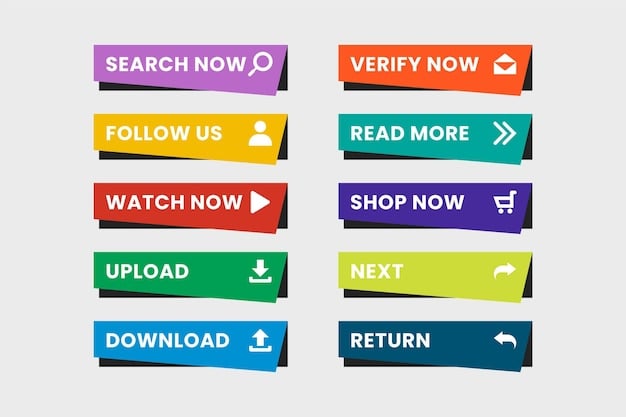
Position your CTA in a way that draws attention, such as at the bottom center or highlighted in a contrasting color. A strong CTA increases the likelihood of conversions and engagement.
Step 6: Proofread and Finalize Your Flyer
Before printing or sharing your flyer, take the time to review every detail. Mistakes, typos, or inconsistencies can undermine your credibility and dilute your message.
Check for Errors: Review all text for spelling, grammar, and punctuation mistakes.
Ensure Consistency: Confirm that fonts, colors, and branding elements are consistent throughout the design.
Test Readability: Ask a friend or colleague to review the flyer to ensure it’s easy to understand at a glance.
Optimize for Printing: Choose the right paper quality and finish (e.g., glossy or matte) based on your flyer’s purpose.
Taking these extra steps ensures your flyer looks professional and leaves a positive impression.
By following these steps, you can design a flyer that grabs attention, conveys your message effectively, and drives action. Whether you’re promoting a new business, announcing an event, or advertising a sale, a well-crafted flyer can be a powerful tool in your marketing arsenal.
Why Free Flyer Templates Are a Game-Changer for Small Businesses
Free flyer templates are a valuable resource for small businesses, offering an affordable and efficient way to create professional marketing materials. These templates enable businesses to quickly design custom flyers that reflect their brand, without the need for expensive graphic design services. Whether promoting a sale, event, or new product, free flyer templates provide an easy way to communicate your message effectively.
By using these templates, small businesses save time and resources while ensuring their promotional materials maintain a consistent, polished look. With customizable options for images, fonts, and colors, businesses can create flyers that resonate with their audience, helping them stand out and boost customer engagement—all within budget. For those looking to create flyers that effectively convey their brand message, exploring various flyer maker tools can be a game-changer. These user-friendly platforms allow anyone to design stunning flyers quickly and effortlessly, contributing to more impactful marketing campaigns.





